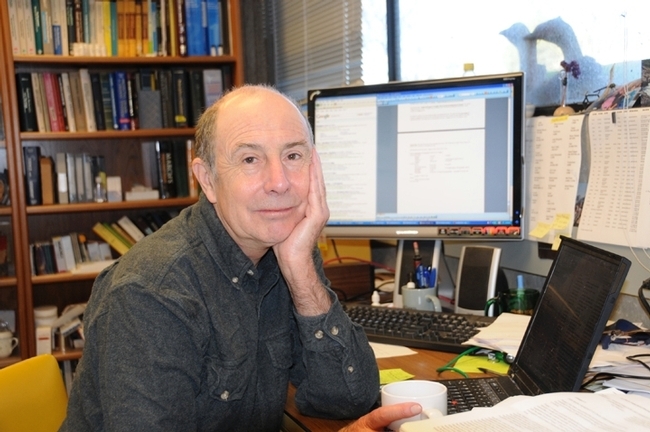He went from researching pest insects to targeting chronic pain in humankind.
He went from discovering a compound that alleviates pain (tested successfully on rodents, cats, dogs and horses) to forming a company EicOsis (pronounced eye-co-sis) to alleviate neuropathic and inflammatory pain in humans and companion animals.
Meet Bruce Hammock, the founder and CEO of EicOsis.
Hammock is a distinguished professor of entomology in the UC Davis Department of Entomology and Nematology who holds a joint appointment with the UC Davis Comprehensive Cancer Center.
He is on a mission, and clinical trials are on the horizon.
EicOsis has just received a $4 million federal grant to advance Hammock's compound discovery through Phase 1 clinical trials. The grant, “Development of an Oral Analgesic for Neuropathic Pain," is funded by the Blueprint for Neuroscience Research. National Institutes of Health (NIH).
The clinical trials, scheduled to begin in 2017, will target diabetic neuropathic pain, occurring in an estimated half of the world's 347 million diabetics, and 29 million Americans.
What exactly is the compound? It's "an inhibitor of the soluble epoxide hydrolase (sEH) enzyme,” said Hammock, whose fundamental research on the developmental biology of insects led to the discovery. “It is a key regulatory enzyme involved in the metabolism of fatty acids and treats pain by stabilizing natural analgesic and anti-inflammatory mediators.”
Many pain relievers are addictive, but not this one. Known as EC5026, the compound is “a potent, orally active and a non-narcotic analgesic that does not adversely affect the brain, gastrointestinal tract, or cardiovascular system,” said Alan Buckpitt, the company's vice president of pharmacology and emeritus professor of molecular biosciences at the UC Davis School of Veterinary Medicine.
“The EicOsis technology may solve a great need in pain treatment in providing a powerful analgesic which avoids the side effects of opioids (narcotics) and nonsteroidal anti-inflammatory drugs (NSAIDs),” said physician Scott Fishman, professor and chief of the Division of Pain Medicine, UC Davis Health System, who is not affiliated with the company. “The EicOsis compound holds great promise for controlling neuropathic pain in general and particularly for this difficult and common medical problem.”
A goal of the Blueprint Neurotherapeutics Network is to discover, develop and generate novel compounds that will ultimately be commercialized and benefit humankind.
When you think of all the havoc that diabetes wreaks (we all have family and friends suffering from the disease and its complications--and some 86 million Americans alone are pre-diabetic), it's good to see this exciting "bench-to-bedside" research.
"It's hard to know where science leads," Hammock acknowledged, noting that his research into how caterpillars turn into butterflies led to this treatment for pain.
Hammock is a fellow of the National Academy of Inventors, which honors academic invention and encourages translations of inventions to benefit society. He is a member of the U.S. National Academy of Sciences, a fellow of the Entomological Society of America, and the recipient of the Bernard B. Brodie Award in Drug Metabolism, sponsored by the America Society for Pharmacology and Experimental Therapeutics. He directs the campuswide Superfund Research Program, National Institutes of Health Biotechnology Training Program, and the National Institute of Environmental Health Sciences (NIEHS) Combined Analytical Laboratory.
A member of the UC Davis faculty since 1980, Hammock received his bachelor of science degree magna cum laude from Louisiana State University in entomology and chemistry, and his doctorate from UC Berkeley in entomology and toxicology, working in xenobiotic metabolism.
Meanwhile, we're all anticipating the clinical trials and what EC5026 can do.
(Note: see main news story on the UC Davis Department of Entomology and Nematology website and links to his work.)
Attached Images:
